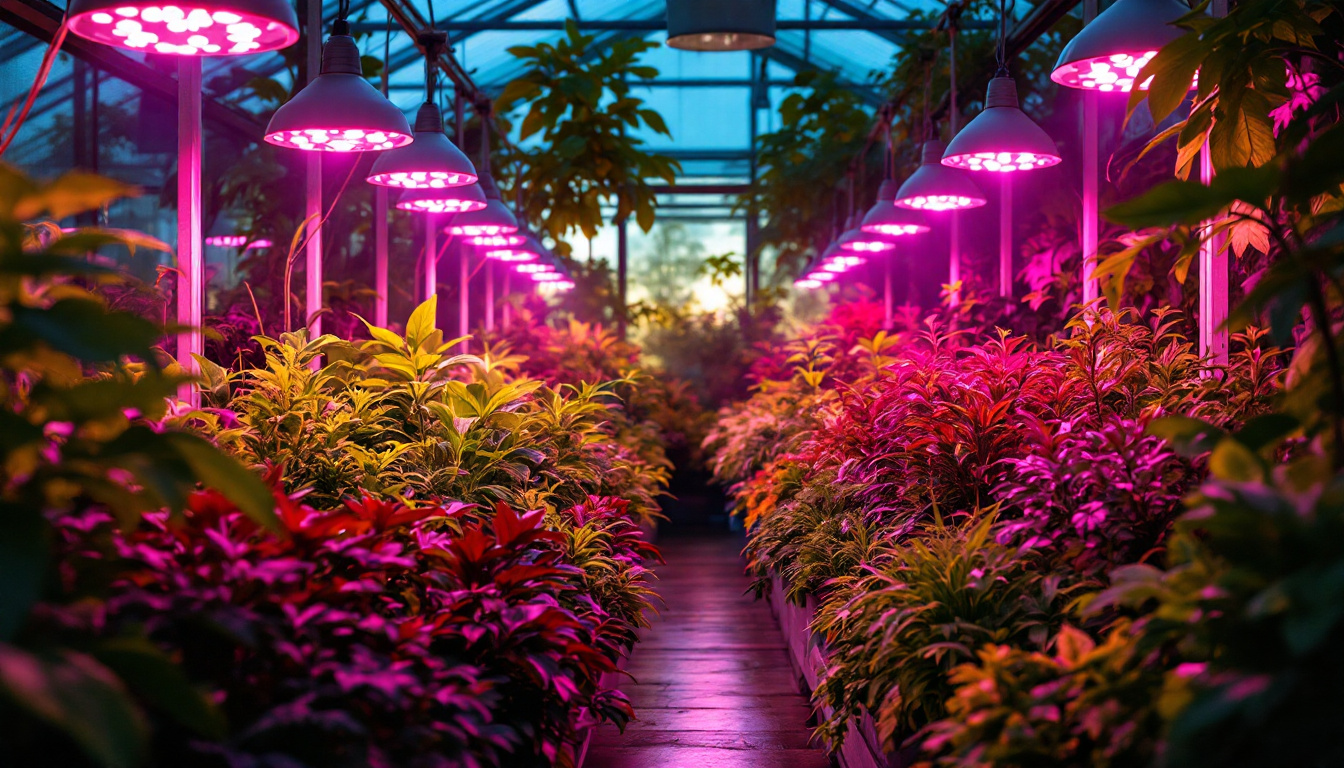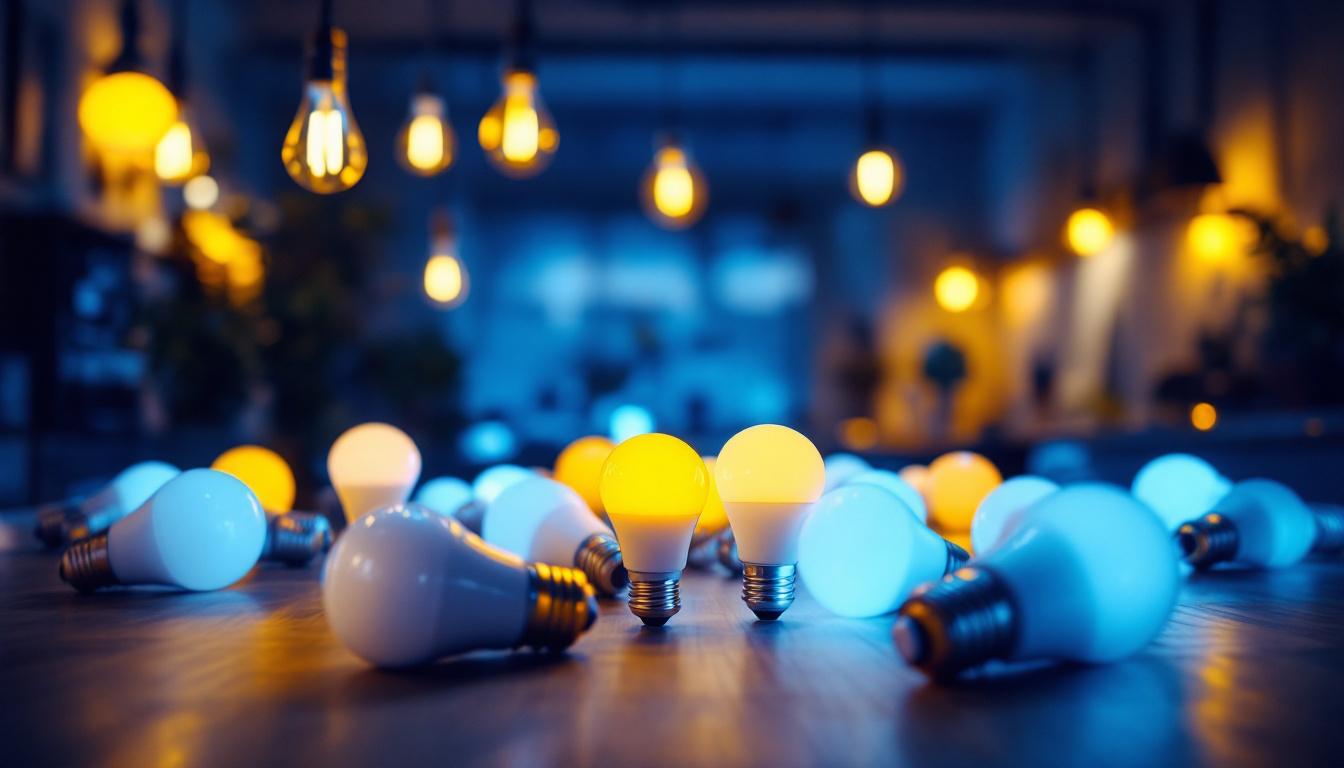
In the realm of horticulture, the importance of effective lighting cannot be overstated. As the demand for indoor gardening and greenhouse cultivation continues to rise, lighting contractors are increasingly called upon to provide innovative solutions that enhance plant growth and optimize energy efficiency. greenhouse grow lamps have emerged as a pivotal tool in this landscape, offering specialized lighting that caters to the unique needs of plants. This article delves into how greenhouse grow lamps can significantly improve lighting installation projects, benefiting both contractors and their clients.
Greenhouse grow lamps are specifically designed to meet the light requirements of plants during various growth stages. Unlike standard lighting solutions, these lamps provide a spectrum of light that mimics natural sunlight, promoting photosynthesis and healthy plant development. The importance of proper lighting cannot be overstated, as it directly affects the growth rate, overall health, and yield of the plants being cultivated. For growers operating in regions with limited sunlight, especially during the winter months, these lamps become an indispensable tool in maintaining a productive greenhouse environment.
There are several types of grow lamps available in the market, each with its own set of advantages and applications. The most common types include:
Each type of grow lamp has its own ideal application, and understanding these differences is crucial for lighting contractors aiming to provide tailored solutions for their clients. For instance, while LED lights may be perfect for a home gardener looking to grow herbs on a windowsill, HID lights might be more suitable for a commercial greenhouse focused on producing high volumes of flowering plants.
The light spectrum plays a vital role in plant growth. Plants utilize different wavelengths of light for various processes, including photosynthesis, germination, and flowering. Grow lamps are designed to emit specific wavelengths that cater to these needs. For instance, blue light (400-500 nm) is essential for vegetative growth, while red light (600-700 nm) promotes flowering and fruiting. Understanding the nuances of these wavelengths allows growers to optimize their lighting setups and achieve the best possible results.
By incorporating grow lamps into lighting installation projects, contractors can ensure that plants receive the optimal light spectrum, leading to healthier growth and higher yields. This not only enhances the quality of the plants but also increases client satisfaction. Furthermore, many modern grow lamps come equipped with smart technology, allowing growers to monitor and adjust lighting conditions remotely. This innovation not only streamlines the growing process but also empowers growers to respond quickly to the changing needs of their plants, ensuring that they thrive in any environment.
Integrating greenhouse grow lamps into lighting installation projects offers numerous benefits that can significantly impact both the contractor’s work and the client’s results. From energy efficiency to improved plant health, the advantages are compelling.
One of the most significant benefits of greenhouse grow lamps, particularly LED options, is their energy efficiency. Traditional lighting solutions consume a considerable amount of electricity, leading to high operational costs for growers. In contrast, LED grow lights use up to 80% less energy, translating to substantial savings on electricity bills.
For lighting contractors, promoting energy-efficient solutions not only aligns with sustainability goals but also enhances their reputation as forward-thinking professionals. Clients are increasingly seeking ways to reduce their carbon footprint, making energy-efficient grow lamps an attractive option.
Greenhouse grow lamps are specifically engineered to optimize plant growth. By providing the right light spectrum, these lamps enhance photosynthesis, leading to faster growth rates, improved yields, and healthier plants. This is particularly important for commercial growers who rely on consistent production to meet market demands.
Contractors who incorporate grow lamps into their projects can offer clients a competitive edge. With the ability to produce higher-quality crops in less time, growers can increase their profitability and customer satisfaction. This, in turn, fosters long-term relationships between contractors and their clients.
Every greenhouse or indoor garden has unique lighting needs based on the types of plants being grown, their growth stages, and the overall environment. Greenhouse grow lamps offer a range of customizable options, including adjustable spectrums and dimmable features.
Lighting contractors can work closely with clients to design tailored lighting solutions that meet specific requirements. This level of customization not only enhances the effectiveness of the lighting installation but also demonstrates the contractor’s commitment to understanding and addressing the client’s needs.
While the benefits of greenhouse grow lamps are clear, there are several important installation considerations that lighting contractors must keep in mind to ensure optimal performance.
The placement of grow lamps is critical to achieving even light distribution throughout the greenhouse or indoor garden. Contractors should consider factors such as the height of the plants, the type of grow lamps being used, and the overall layout of the growing area.
Proper coverage ensures that all plants receive adequate light, preventing issues such as leggy growth or uneven flowering. Contractors can utilize tools such as light meters to measure light intensity and make necessary adjustments to lamp placement.
Heat management is another crucial aspect of installing greenhouse grow lamps. Some types of grow lamps, particularly HID lights, generate significant heat, which can affect the growing environment. Proper ventilation and cooling systems should be integrated into the design to maintain optimal temperatures for plant growth.
Contractors must assess the thermal dynamics of the greenhouse or growing space and recommend appropriate cooling solutions, such as exhaust fans or air conditioning units, to prevent overheating.
Different types of grow lamps have varying electrical requirements, and it’s essential for contractors to ensure that the electrical system can support the chosen lighting solution. This includes considering factors such as voltage, wattage, and circuit load.
Contractors should work closely with electricians to ensure that all electrical installations comply with safety standards and regulations. This not only protects the integrity of the lighting system but also ensures the safety of the growing environment.
The field of grow lighting is continually evolving, with new technologies and innovations emerging regularly. Lighting contractors must stay informed about these trends to provide the best solutions for their clients.
One of the most exciting developments in grow lighting is the integration of smart technology. Smart grow lamps can be controlled remotely, allowing growers to adjust light intensity, spectrum, and timing based on the specific needs of their plants.
These advancements not only enhance convenience but also enable more precise control over the growing environment, leading to improved plant health and productivity. Contractors who embrace smart lighting solutions can position themselves as leaders in the industry, offering cutting-edge technology to their clients.
Ongoing research into plant biology and lighting technology continues to yield new insights and innovations. For example, studies are exploring the effects of different light spectrums on specific plant varieties, leading to the development of more targeted grow lamps.
Lighting contractors should stay abreast of these developments and be prepared to adapt their offerings based on the latest research. This commitment to continuous improvement not only benefits clients but also enhances the contractor’s credibility in the industry.
As environmental concerns become increasingly prominent, the demand for sustainable and eco-friendly lighting solutions is on the rise. Contractors can capitalize on this trend by offering grow lamps made from recyclable materials or those that utilize renewable energy sources.
By prioritizing sustainability in lighting installation projects, contractors can attract environmentally conscious clients and contribute to a greener future. This approach not only aligns with market demands but also positions the contractor as a responsible and forward-thinking professional.
Greenhouse grow lamps represent a transformative opportunity for lighting contractors looking to enhance their installation projects. By understanding the unique benefits of these specialized lamps, contractors can provide tailored solutions that improve energy efficiency, promote healthy plant growth, and meet the diverse needs of their clients.
As the industry continues to evolve, staying informed about the latest trends and technologies will be essential for contractors seeking to remain competitive. By embracing innovations such as smart lighting solutions and sustainable practices, lighting professionals can position themselves as leaders in the field, ultimately driving success for both their businesses and their clients.
Incorporating greenhouse grow lamps into lighting installation projects not only enhances the quality of the growing environment but also fosters lasting relationships between contractors and clients. As the demand for indoor gardening and greenhouse cultivation continues to rise, the role of lighting contractors will become increasingly vital in shaping the future of horticulture.
Ready to elevate your lighting installation projects with the most efficient and advanced greenhouse grow lamps? At LumenWholesale, we provide lighting contractors like you with the highest quality, spec-grade lighting products at prices that can’t be beaten. Our selection is tailored to meet the highest industry standards, ensuring every project shines with reliability and performance. Plus, with free shipping on bulk orders, you can stock up on premium lighting without worrying about hidden fees or compromises. Don’t miss out on the perfect combination of quality, affordability, and convenience. Wholesale Lighting at the Best Value is just a click away. Transform your lighting installations today with LumenWholesale.

Discover the secrets to maximizing LED bulb longevity and avoid costly pitfalls in your lighting projects.

Discover how dusk to dawn light bulbs can revolutionize outdoor lighting projects for contractors.

Discover the answers to lighting contractors’ most common questions about the Ex 300W A3D50D120 Class 1 Div 1.

Explore how the integration of modern pathways is revolutionizing the lighting industry, enhancing efficiency, and boosting profitability for contractors.